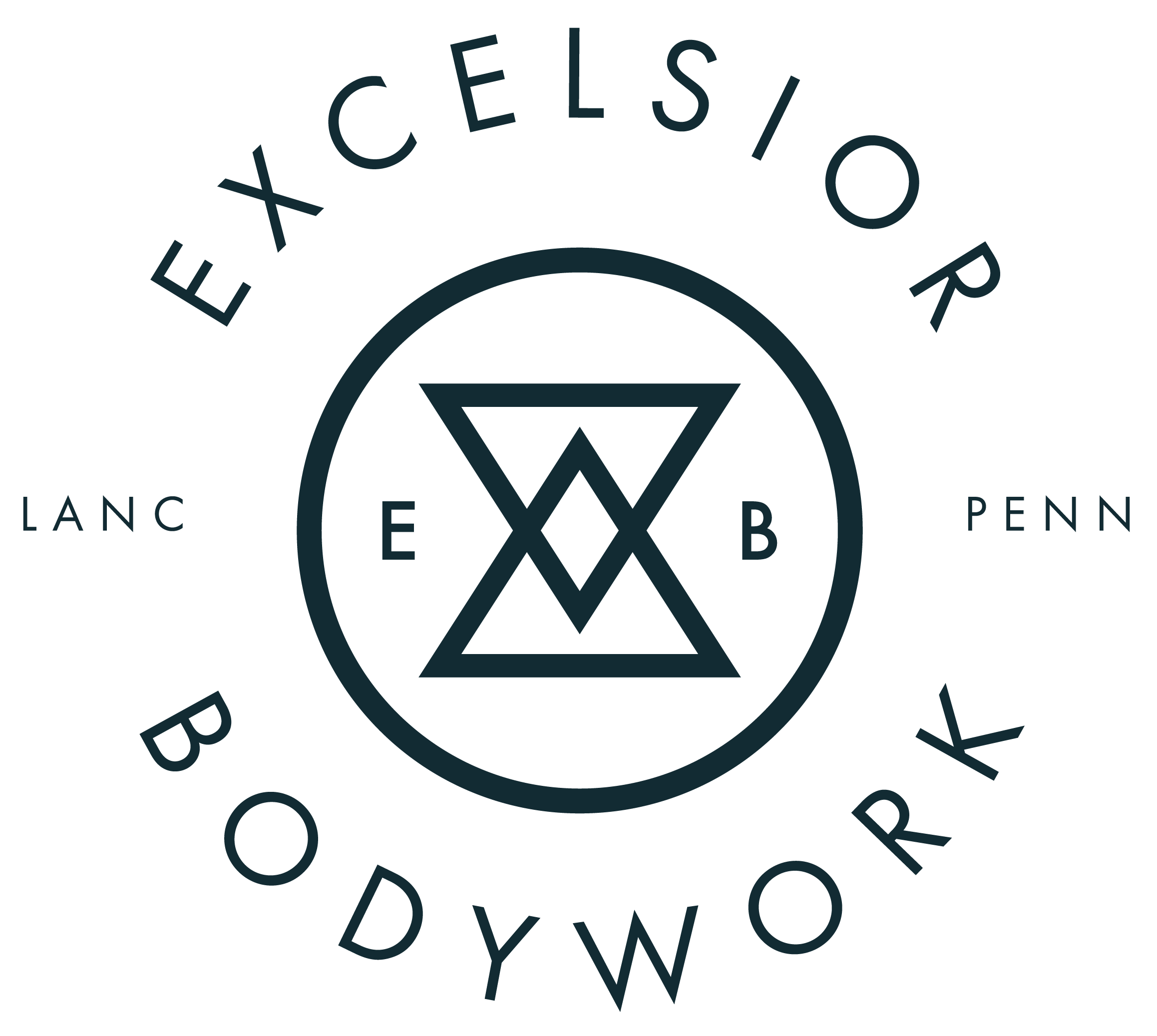THE TEAM BEHIND THE WORK
Excelsior’s practitioners are manual therapists and coaches who banded together to bring the science of Functional Range Systems® to Lancaster County. Our own experiences with injury and illness led us to seek long-term health solutions beyond traditional fitness models. We specialize in Functional Assessment and Release, Functional Range Conditioning, Kinstretch, and the Internal Strength Model.
Unwinding inhibiting patterns, finding more space and strength in your body
A few years ago I struggled with severe neuropathy in my feet and legs. I was completely numb from the ankle down and my calves often cramped so tightly I couldn't walk. None of the doctors I consulted had any relief or even any answers for me. My condition was a result of months of chemotherapy. I was thankfully alive, but the quality of my life was severely compromised. Somewhat out of desperation, I made an appointment with a manual therapist.
By the end of the session I felt my toes for the first time in years. I cried real tears of joy. Before I got home I had decided to pursue this knowledge, to learn the techniques and study the body in hopes of being able to help others in the way I had been helped. I can't promise you an experience as transformative as mine, but I'm nearly certain that together we can find you some relief and begin the process of unwinding inhibiting patterns, finding more space and strength in your body.
Facing pain and weakness
Redefining strength
Not so long ago, I was the one on this clinic table. I’d managed to regain nearly 25 pounds of body weight lost to an impending neurodegenerative autoimmunity. But pain and loss of muscle control persisted. Neither physical therapy, nor the conventional wisdom ingrained as a former athlete and coach, produced lasting changes. And it was no longer an option to just power through. I’d spent more than a decade doing so, while working and volunteering away from the health field through several service projects, in contexts rife with socioeconomic and cultural turmoil. That chapter brought me shoulder-to-shoulder with refugees, marginalized women, and struggling families. It also placed me in the path of perpetrators and the prejudices which fueled their abuse. These experiences took a toll, leaving me doubtful of my ability to heal, and to leverage those experiences to make a positive impact as I aimed to return to work in health and in the community.
Excelsior’s mechanical and neurological inputs changed everything for me. This work gave me a logical path to address my specific compensations, along with the tools to keep progressing on my own. The clinic became a classroom, teaching me a different kind of toughness— beyond kettlebells and deadlifts, beyond trying to be unbreakable. I learned to slow down, face my weaknesses, and accept help to make changes that were challenging, but possible. I never imagined I’d fully recover or return to the health field as a therapist and coach in the very place I learned to redefine strength. Since then, I’ve been able to train in self-defense, continue my education, and work at a partner organization, Lone Oak Barn, in programs supporting the community. Whoever you are, no matter your background, you are worth the effort and help it takes to feel safe and strong in your own skin.




